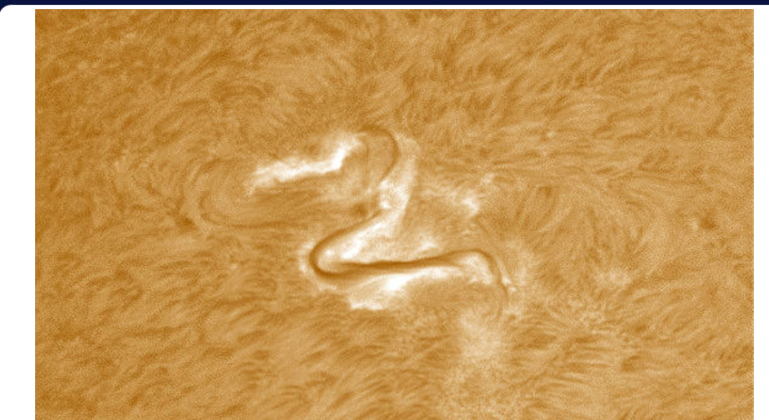




Infrasound Resonance Influences Atomic Decay Rates
The Strange Case for Solar Flares and Radioactive Elements
by Dan Strober for the Stanford Report, with contributions by Chantal Jolagh
Augsust 23, 2010
It's a mystery that presented itself unexpectedly: The radioactive decay of some elements sitting quietly in laboratories on Earth seemed to be influenced by activities inside the sun, 93 million miles away.
Is this possible?
Researchers from Stanford and Purdue University believe it is. But their explanation of how it happens opens the door to yet another mystery.
There is even an outside chance that this unexpected effect is brought about by a previously unknown particle emitted by the sun. "That would be truly remarkable," said Peter Sturrock, Stanford professor emeritus of applied physics and an expert on the inner workings of the sun. The story begins, in a sense, in classrooms around the world, where students are taught that the rate of decay of a specific radioactive material is a constant. This concept is relied upon, for example, when anthropologists use carbon-14 to date ancient artifacts...
But that assumption was challenged in an unexpected way by a group of researchers from Purdue University... Ephraim Fischbach, a physics professor at Purdue, was looking into the rate of radioactive decay of several isotopes as a possible source of random numbers generated without any human input. As the researchers pored through published data on specific isotopes, they found disagreement in the measured decay rates - odd for supposed physical constants.
Checking data collected at Brookhaven National Laboratory on Long Island and the Federal Physical and Technical Institute in Germany, they came across something even more surprising: long-term observation of the decay rate of silicon-32 and radium-226 seemed to show a small seasonal variation. The decay rate was ever so slightly faster in winter than in summer...
The Sun Speaks
On Dec 13, 2006, the sun itself provided a crucial clue, when a solar flare sent a stream of particles and radiation toward Earth. Purdue nuclear engineer Jere Jenkins, while measuring the decay rate of manganese-54, a short-lived isotope used in medical diagnostics, noticed that the rate dropped slightly during the flare, a decrease that started about a day and a half before the flare.
If this apparent relationship between flares and decay rates proves true, it could lead to a method of predicting solar flares prior to their occurrence, which could help prevent damage to satellites and electric grids, as well as save the lives of astronauts in space.
The decay-rate aberrations that Jenkins noticed occurred during the middle of the night in Indiana - meaning that something produced by the sun had traveled all the way through the Earth to reach Jenkins' detectors. What could the flare send forth that could have such an effect?
Jenkins and Fischbach guessed that the culprits in this bit of decay-rate mischief were probably solar neutrinos, the almost weightless particles famous for flying at almost the speed of light through the physical world - humans, rocks, oceans or planets - with virtually no interaction with anything...
"It doesn't make sense according to conventional ideas," Fischbach said. Jenkins whimsically added, "What we're suggesting is that something that doesn't really interact with anything is changing something that can't be changed."
"It's an effect that no one yet understands," agreed Sturrock. "Theorists are starting to say, 'What's going on?' But that's what the evidence points to. It's a challenge for the physicists and a challenge for the solar people too."
Analysis
In fact, the subtle variations in atomic decay data are not an effect of neutrinos, but the direct result of measurable surges of localized infrasound resonance, just as in the case of the 'aberrant' fluctuations of planetary gravity fields and the patterns observed in the variations in precipitation rates as measured using the long-term water flow rates of major rivers. The fundamental integrity of the measured radioactive isotopes is directly affected by the incident infrasound radiation.
The decay rates measured by Jenkins at Purdue show a significant fluctuation specifically because of the location of his laboratory in relation to the Great Pyramid of Giza. The Purdue University campus in West Lafayette, Indiana (40.43°N 86.91°W) is 6,176 miles from Giza, a distance comprising 24.8% of the Earth's mean circumference. Infrasound standing waves focused by the Great Pyramid into the central Indiana area not only alter decay rates in Purdue labs, but also levitate huge sandstone boulders into treetops in nearby Limon and Yellowwood Indiana State Parks at the 25.0% distance.